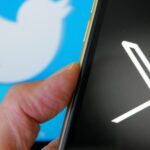In today’s digital age, our smartphones have become indispensable companions. From checking emails to connecting with friends on social media, these devices are integral to our daily routines. But what happens when you can’t find your phone or its battery dies? If the thought fills you with anxiety, you might be experiencing nomophobia. (You can complete the Nomophobia Questionnaire below.)
Understanding Nomophobia
Nomophobia, short for “no mobile phone phobia,” describes the fear or anxiety of being without a mobile phone or being unable to use it. This term first emerged in a 2008 study commissioned by the UK Post Office, revealing that over 50% of participants felt anxious when they couldn’t use their phones. As smartphones have become more embedded in our daily lives, the prevalence of nomophobia has increased, particularly among younger adults and heavy smartphone users.
Symptoms and Impact
Nomophobia manifests through various symptoms, including anxiety, distress, and obsessive checking of your phone. People with this phobia often feel a compulsion to keep their phones close by at all times, ensuring they never miss a call, message, or social media update. This behavior can lead to significant stress and interfere with daily life and social interactions.
Why It Happens
Several factors contribute to nomophobia:
Communication: The fear of being unable to contact or be contacted by others.
Connectedness: The anxiety of losing touch with one’s online presence and social networks.
Information Access: The discomfort of being unable to retrieve or access information instantly.
Convenience: The stress of giving up the numerous conveniences that smartphones provide.
The Nomophobia Questionnaire (NMP-Q)
To better understand and measure nomophobia, researchers have developed the Nomophobia Questionnaire (NMP-Q). This tool helps identify the severity of nomophobia by assessing various dimensions of smartphone dependence.
How the NMP-Q Works
The NMP-Q consists of 20 statements that respondents rate on a 7-point Likert scale, from “Strongly Disagree” to “Strongly Agree.” These statements cover four main dimensions:
Not Being Able to Communicate: Fear related to losing instant communication abilities.
Losing Connectedness: Anxiety about being disconnected from social and online networks.
Not Being Able to Access Information: Discomfort from not having immediate access to information.
Giving Up Convenience: Stress over losing the practical benefits of smartphone use.
Respondents’ scores range from 20 to 140, with higher scores indicating a greater level of nomophobia. A score above 60 suggests moderate to severe nomophobia, indicating significant anxiety related to being without a mobile phone.
Take the Nomophobia Questionnaire (NMP-Q)
Nomophobia Questionnaire
The information provided in this article, including the Nomophobia Questionnaire (NMP-Q), is for educational and informational purposes only. The NMP-Q is a self-reported measure developed by researchers Caglar Yildirim and Ana-Paula Correia to assess the severity of nomophobia, and while it has been validated through academic research, it is not intended to diagnose any mental health conditions.
If you find that your responses indicate a high level of nomophobia, or if you experience significant anxiety and distress related to smartphone use, we recommend consulting with a qualified mental health professional. Self-assessments like the NMP-Q can provide valuable insights into your behaviors and feelings, but they cannot replace professional evaluation and advice.




